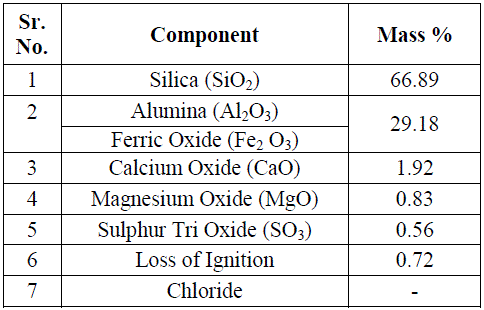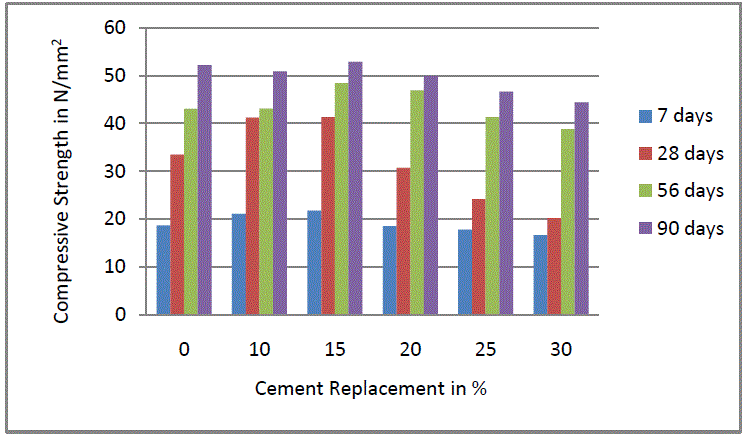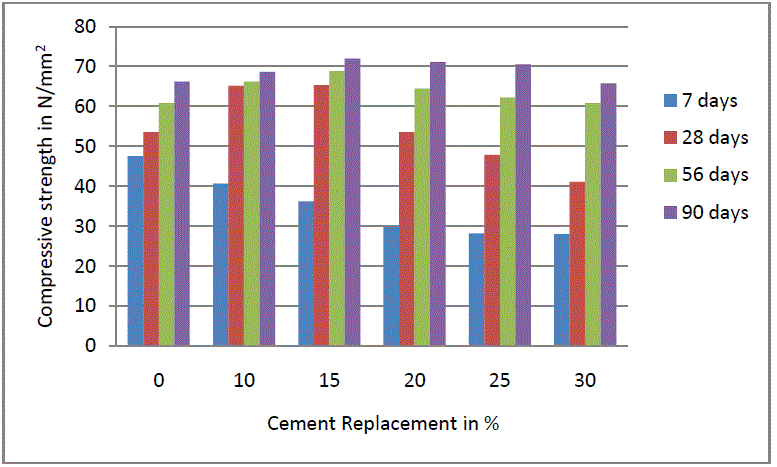ISSN ONLINE(2319-8753)PRINT(2347-6710)
ISSN ONLINE(2319-8753)PRINT(2347-6710)
Mrs.U.R.Kawade1, Mr.V.R.Rathi2, Miss Vaishali D. Girge3
|
| Related article at Pubmed, Scholar Google |
Visit for more related articles at International Journal of Innovative Research in Science, Engineering and Technology
With increasing demand and consumption of cement, researchers and scientist are in search of developing alternate binders that are ecofriendly and contribute towards waste management. The utilization of industrial and agricultural waste produced by industrial processes has been the focus on waste reduction. One of the agro waste sugar cane bagasse ash (SCBA)which is a fibrous waste product obtained from sugar mills as byproduct. Juice is extracted from sugar cane then ash produced by burning bagasse in uncontrolled condition and at very high temperature. In this paper SCBA has been chemically and physically characterized and partially replaced in the ratio of 0%, 10%, 15%, 20%, 25% and 30% by weight of cement in concrete. The properties for fresh concrete are tested like slump cone test and for hardened concrete compressive strength at the age of 7,28,56 and 90 days. The test result indicate that the strength of concrete increase up to 15% SCBA replacement with cement.
Keywords |
| Bagasse Ash, concrete, Compressive strength. |
INTRODUCTION |
| Ordinary Portland cement is the most extensively used construction material in the world. Since the early 1980’s, there has been an enormous demand for the mineral admixture and in future this demand is expected to increase even more [1]. Also in this modern age every structure has its own intended purpose and hence to meet this purpose modification in traditional cement concrete has become essential. This situation has led to the extensive research on concrete resulting in mineral admixture to be partly used as cement replacement to increase workability in most structural application [4]. If some of raw material having similar composition can be replaced by weight of cement in concrete then cost could be reduced without affecting its quality [2]. For this reason sugarcane bagasse ash (SCBA) is one of the main byproduct can be used as mineral admixture due to its high content in silica (SiO2) [3].A few studies have been carried out on the ashes obtained directly from the industries to study pozzolanic activity and their suitability as binders, partially replacing cement [5]. The present study was carried out on SCBA obtained by controlled combustion of sugarcane bagasse, which was procured from the Maharashtra in India. Sugarcane production in India is over 300 million tons/year leaving about 10 million tons of as unutilized and, hence, wastes material. This paper analysesthe effect of SCBA inconcrete by partial replacement of cement at the ratio of 0%, 10%, 15%, 20%, 25% and 30% by weight. The main ingredients consist of Portland cement, SCBA, crushedsand, coarse aggregate and water. After mixing, concrete specimens were casted and subsequently all test specimens were cured in water at 7, 28, 56 and 90 Days. |
II. EXPERIMENTAL INVESTIGATION |
| In this experimental work, a total of56 numbers of concrete specimens were casted. The standard size of cube 150mm×150mm×150mm is used. The mix design of concrete was done according to Indian Standard guidelines [6] for M 20, M 30 and M40 grade. Based upon the quantities of ingredient of the mixes, the quantities of SCBA for 0, 10, 15, 20, 25 and 30% replacement by weight wereestimated. The ingredients of concrete were thoroughly mixed in mixer machine till uniform thoroughly consistency was achieved. Before casting, machine oil was smeared on the inner surfaces of the cast iron mould. Concrete was poured into the mould and compacted thoroughly using table vibrator. The top surface was finished by means of a trowel. The specimens were removed from the mould after 24h and then cured under water for a period of 7, 28, 56 and 90 days. The specimens were taken out from the curing tank just prior to the test. The compressive test was conducted using a 2000kNcapacity compression testing machine. This test was conducted as per the relevant Indian Standard specifications [7-8] . |
A. Material Details |
| The materials used in this investigation are: Cement: The OPC Cement of 53 gradewas used with fineness 6%and standard consistency 28%. Fine Aggregate: Basalt stone crushed sand is used as fine aggregate. The sand particles should also pack to give minimum void ratio, higher voids content leads to requirement of more mixing water. In the present study the sand conforms to zone II as Per the Indian standards [9]. The specific gravity of sand is 2.64and fineness modulus is 3.35. Those fractions from 4.75 mm to 50 micron are termed as fine aggregate, and the bulk density of fine aggregate is 1593.16kg/m3 . Coarse Aggregates: The crushed aggregates used were 10mm and 20mm nominal size and are tested as per Indian standards[9] and results are within the permissible limit. The specific gravity and bulk density of 10 mm and 20mm aggregate are 2.78 and 2.83 and 1687 kg/ m3 and 1792.31kg/m3respectively.And fineness modulus is 6.260and 6.734. Water: Water available in the site campus conforming to the requirements of water for concreting and curing as per IS: 456-2009. Sugarcane Bagasse Ash: The sugarcane bagasse consists of approximately 50% of cellulose, 25% of hemicelluloses and 25% of lignin. Each ton of sugarcane generates approximately 26% of bagasse (at a moisture content of 50%) and 0.62% of residual ash. The residue after combustion presents a chemical composition dominates by silicon dioxide (SiO2). In spite of being a material of hard degradation and that presents few nutrients, the ash is used on the farms as a fertilizer in the sugarcane harvests. In this sugarcane bagasse ash was collected during the cleaning operation of a boiler operating in the Ghodganga Sugar Factory, located in the city of Shirur (Pune), Maharashtra. |
 |
| TABLE I CHEMICAL COMPOSITION OF SCBA |
B. Experimental Results |
| The strength results obtained from the experimental investigations are showed in tables. All the values are the average of the three trails in each case in the testing program of this study. The results are discussed as follows. |
 |
| Fig. 1 Compressive strength of M 20 Grade concrete |
 |
| Fig. 2 Compressive strength of M 30 Grade concrete |
 |
| Fig. 3 Compressive strength of M 40 Grade concrete |
III. CONCLUSION |
| The results show that the SCBA concrete had significantly higher compressive strength compare to that of the concrete without SCBA. It is found that the cement could be advantageously replaced with SCBA up to maximum limit of 15%. Although, the optimal level of SCBA content was achieved with 15.0% replacement. Partial replacement of cement by SCBA increases workability of fresh concrete; therefore use of super plasticizer is not essential. |
References |
|